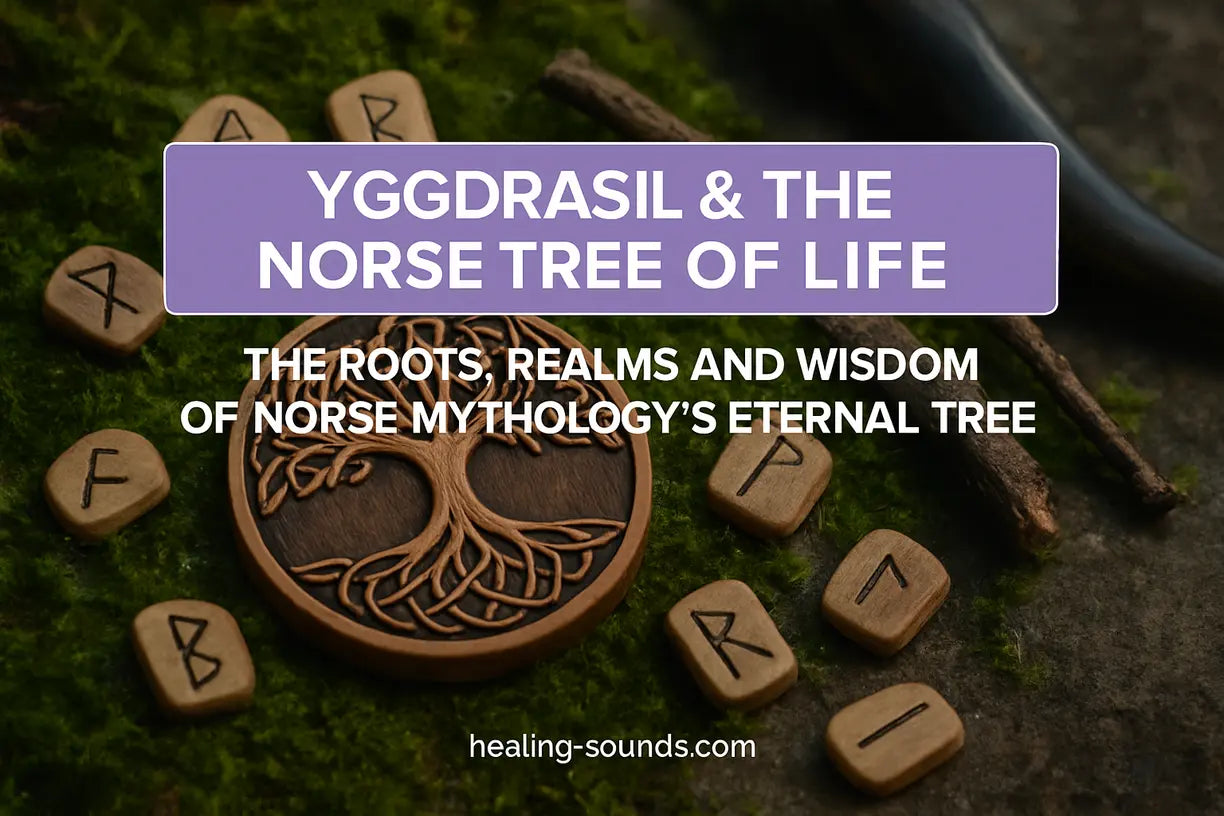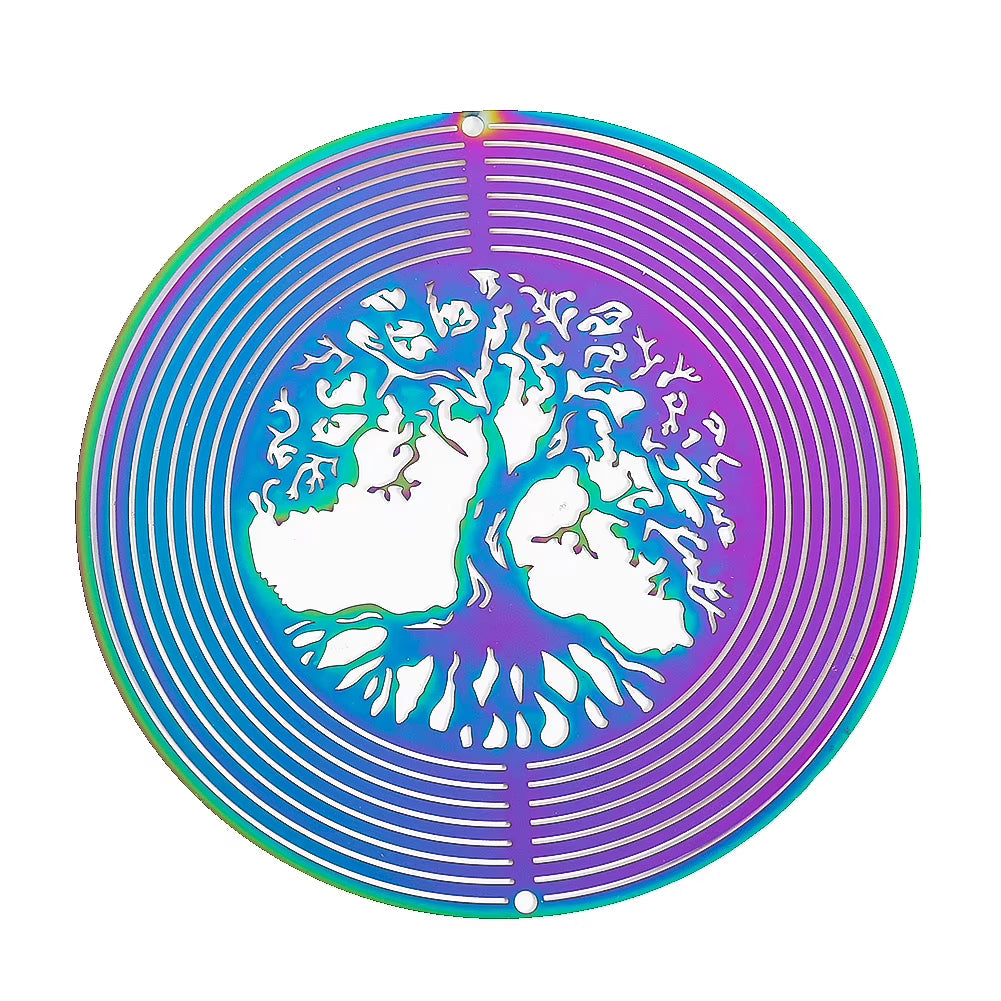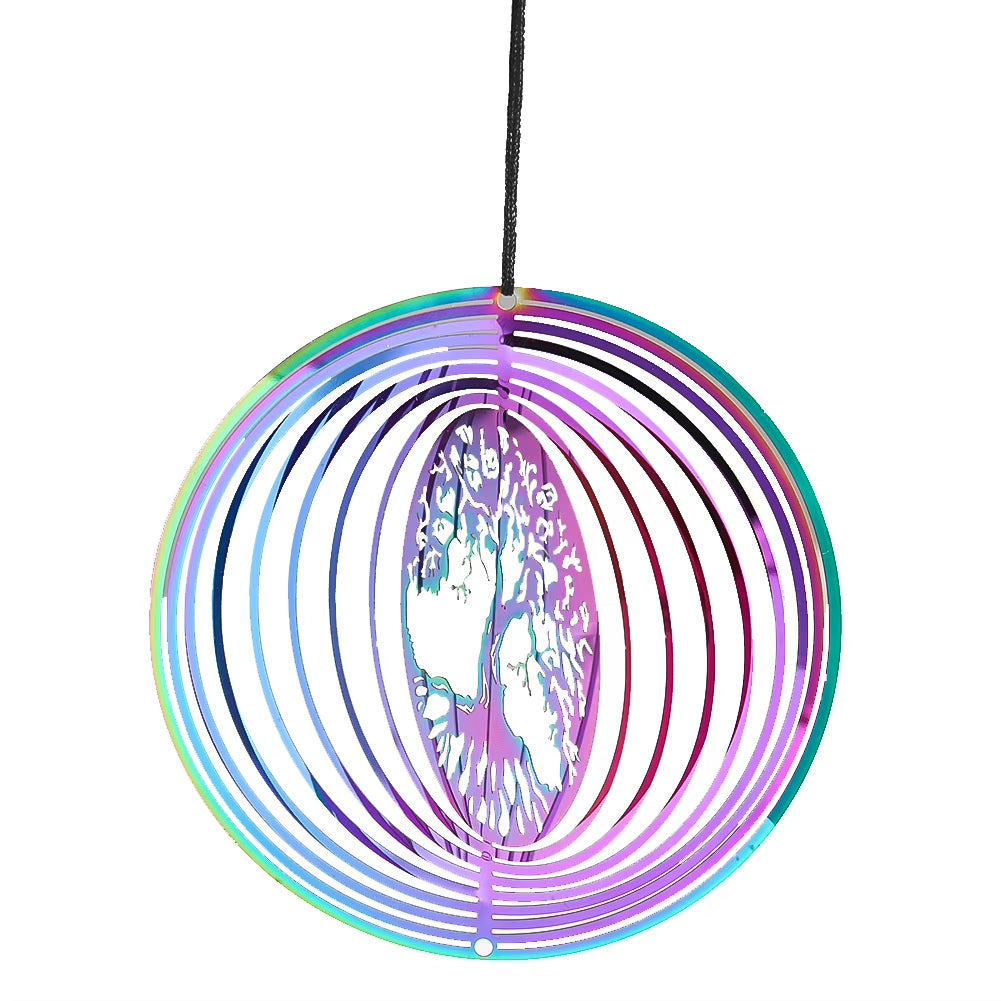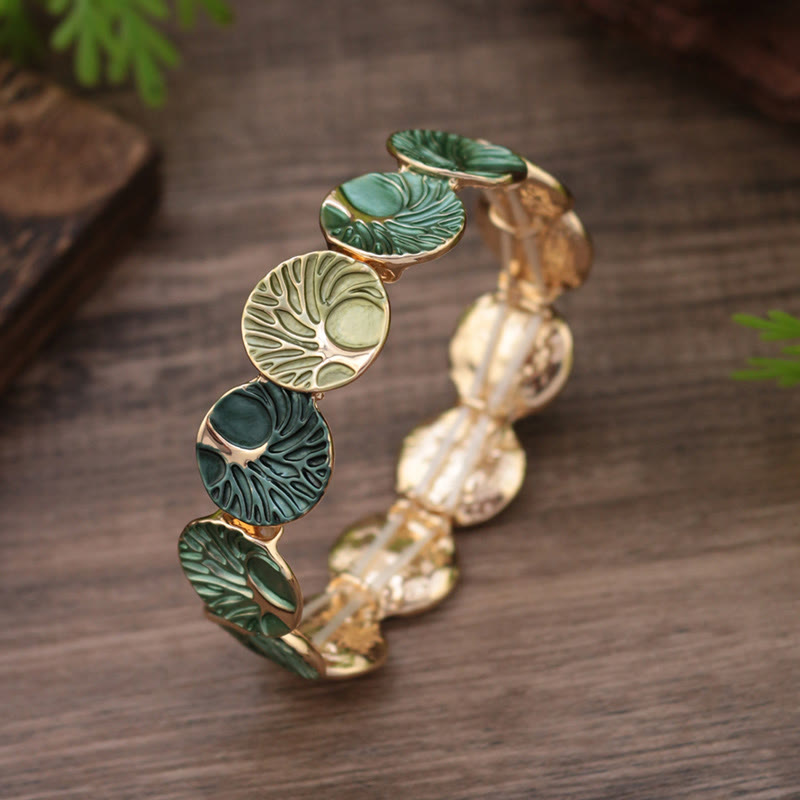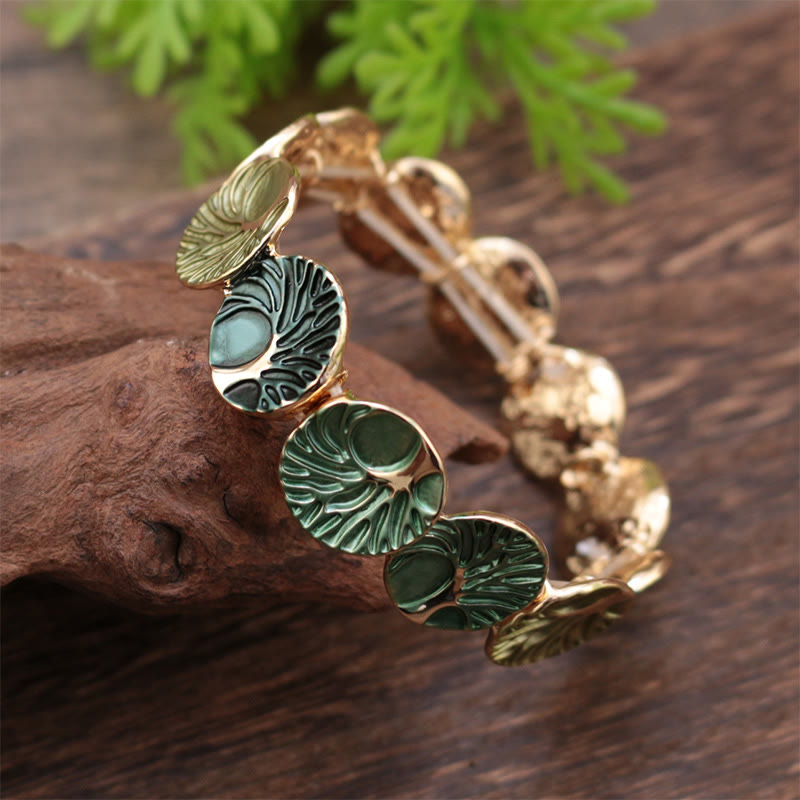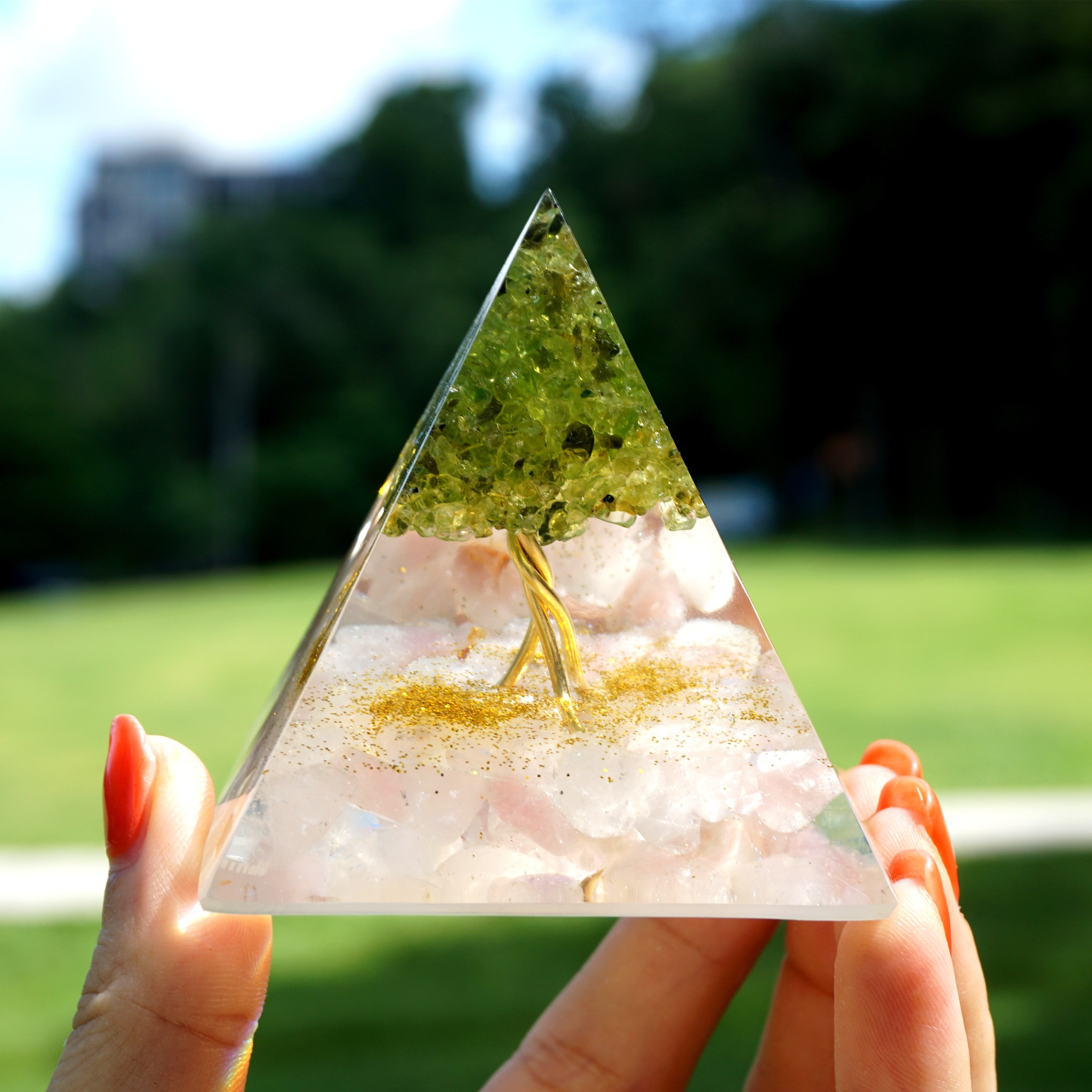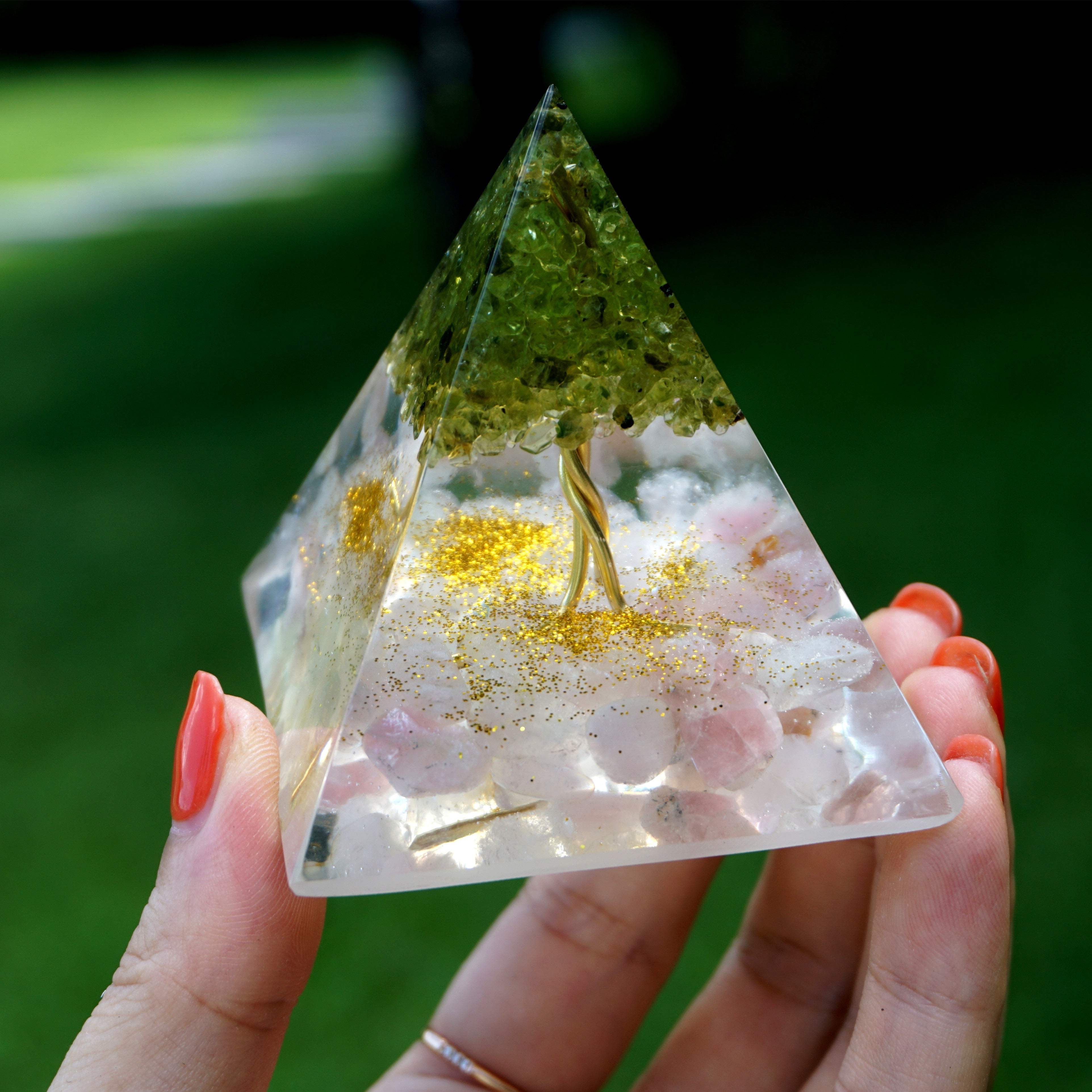Qu'est-ce qu'Yggdrasil, l'arbre de vie nordique ?
Dans la mythologie nordique, Yggdrasil est l'Arbre-Monde sacré , un immense frêne central autour duquel toute existence est tissée. Son nom est souvent traduit par « Cheval d'Odin », en référence à l'époque où le dieu Odin se pendit à une branche pendant neuf jours et neuf nuits pour acquérir la connaissance des runes, chevauchant métaphoriquement l'arbre comme une potence. Cet acte associe immédiatement Yggdrasil aux thèmes du sacrifice, de la sagesse et de la quête d'un savoir plus profond. Symbole ultime de connexion, Yggdrasil est un pilier cosmique dont les racines plongent profondément dans l'inconnu et dont les branches effleurent les cieux. Yggdrasil n'est pas un simple objet passif dans le cosmos ; c'est une entité vivante qui soutient et structure l'univers, reliant les destinées de tous les êtres à travers son immense étendue.
Les trois niveaux d'Yggdrasil : racines, tronc et branches
La structure d'Yggdrasil est divisée en trois niveaux distincts – racines, tronc et branches –, chacun correspondant à différents domaines et concepts de la cosmologie nordique. Cette division renforce le rôle de l'arbre comme lien entre différents plans d'existence.Les racines du destin et de la connaissance
Yggdrasil repose sur trois racines massives qui s'étendent vers différents royaumes puissants, l'ancrant ainsi dans la trame de la réalité. Chaque racine est alimentée par une source sacrée :- Le Puits d'Urd (Puits du Destin) : Situé à Asgard, ce puits est entretenu par les Nornes, les trois êtres féminins qui façonnent le destin de tous les mortels et de tous les dieux.
- Le Puits de Mimir (Puits de Sagesse) : Situé à Jotunheim, le royaume des géants, ce puits recèle une profonde sagesse. Odin a sacrifié son œil pour boire son eau.
- Hvergelmir (La bouilloire rugissante) : Située à Niflheim, c'est la source de tous les grands fleuves du monde et abrite le dragon Níðhöggr, qui ronge la racine.
Le Coffre : Midgard, le Royaume des Humains
Le tronc robuste d'Yggdrasil s'élève au centre du cosmos, représentant Midgard, le monde de l'humanité . Ce royaume, situé entre les racines souterraines et les branches célestes, symbolise la place de l'humanité dans le grand ordre cosmique, connectée à la fois au divin et au chtonien. Le Bifrost, un pont arc-en-ciel scintillant, relie Midgard à Asgard, permettant le passage entre le monde des mortels et celui des dieux.Les Branches : Vers les cieux
Les plus hautes branches d'Yggdrasil s'étendent au-dessus des cieux, créant la voûte d'Asgard, la demeure des dieux Ases. Ces branches constituent un monde à part entière, grouillant de créatures mythiques. Un aigle anonyme trône tout en haut, tandis que l'écureuil Ratatoskr parcourt le tronc , transmettant messages et insultes entre l'aigle et le dragon Níðhöggr en contrebas, symbolisant les conflits et les échanges constants au sein du cosmos.Les neuf mondes de l'arbre du monde
L'une des fonctions les plus vitales d'Yggdrasil est de contenir les Neuf Mondes entre ses racines et ses branches. Ces royaumes sont des plans d'existence distincts, chacun abritant différents types d'êtres. Bien que leur localisation exacte soit controversée, on pense généralement qu'ils sont regroupés sur les trois niveaux de l'arbre.Les neuf royaumes de la cosmologie nordique :
- Asgard : Le royaume céleste des dieux Ases, gouverné par Odin.
- Vanaheim : La demeure des dieux Vanir, associée à la nature et à la fertilité.
- Alfheim : Le monde radieux des elfes de lumière.
- Midgard : Le monde des humains, la « Terre du Milieu ».
- Jotunheim : la terre rude et montagneuse des géants du gel.
- Svartalfheim : La demeure souterraine des nains, maîtres artisans.
- Niflheim : Un monde sombre et primordial de glace, de brume et de brouillard.
- Muspelheim : Un royaume de flammes ardentes, gardé par le géant Surtr.
- Hel : Le royaume souterrain des morts, gouverné par la déesse du même nom.
 Apporter l’équilibre cosmique d’Yggdrasil dans votre propre espace peut être un puissant rappel de cette interconnexion.
Apporter l’équilibre cosmique d’Yggdrasil dans votre propre espace peut être un puissant rappel de cette interconnexion. Moulin à vent cinétique en métal Arbre de vie pour jardin
$23.90 $30.90
Apportez l'énergie d'Yggdrasil chez vous avec cette toupie de jardin dynamique Arbre de Vie, symbolisant l'équilibre cosmique et la vitalité.
Explorer le produitLes pouvoirs et le symbolisme d'Yggdrasil
Au-delà de son rôle de carte cosmique, Yggdrasil est riche en symboles, représentant les principes fondamentaux de la vision du monde nordique. Comprendre ces multiples facettes révèle pourquoi l' arbre-monde de la mythologie nordique continue de nous fasciner.Symbole de connexion et d'interdépendance
D'abord et avant tout, Yggdrasil représente le lien universel entre toutes choses. Il démontre qu'aucun royaume, être ou événement n'existe isolément. Les actions d'un monde, comme la querelle entre l'aigle et le dragon, se répercutent sur l'ensemble du système. Cela nous enseigne une profonde leçon sur l'interdépendance de la vie et l'équilibre complexe de l'univers.
Symbole de sagesse et de sacrifice
Yggdrasil est intrinsèquement lié à la quête du savoir. Le sacrifice d'Odin pour apprendre les secrets des runes et son empressement à échanger un œil contre une boisson du puits de Mimir se situent tous deux dans le contexte de l'Arbre-Monde. Cela témoigne que la véritable sagesse exige souvent d'importants sacrifices et un voyage vers l'inconnu.
Symbole de la vie, de la mort et de la renaissance
L'Arbre-Monde est éternel, et pourtant il souffre. Il est rongé par un dragon, ses cerfs dévorent ses feuilles et tremble pendant le Ragnarök, la « fin des dieux » prophétisée. Pourtant, même après cet événement cataclysmique, Yggdrasil perdure. Il abrite les deux humains qui repeupleront le nouveau monde, Líf et Lífþrasir. À ce titre, il est le symbole ultime de la résilience, représentant le cycle ininterrompu de la vie, de la mort et de la renaissance .
Yggdrasil dans la spiritualité et la culture modernes
L'image puissante de l'arbre de vie nordique a transcendé les textes anciens et s'est solidement ancrée dans la culture moderne. Pour beaucoup, c'est un puissant emblème spirituel représentant l'épanouissement personnel, les racines ancestrales et la quête d'une compréhension plus holistique de la vie. Son motif complexe et ramifié a fait du tatouage de l'arbre de vie dans la mythologie nordique un choix populaire pour ceux qui souhaitent perpétuer son symbolisme.
Des bijoux complexes aux œuvres d'art évocatrices, Yggdrasil est un pont vers un passé empreint de grandeur mythique et de profondes réflexions philosophiques. Il nous rappelle nos propres liens avec nos familles, notre patrimoine et la nature qui nous entoure.

Embrassez l'esprit d'Yggdrasil
$24.90
$35.90
Portez l'esprit d'Yggdrasil à votre poignet et adoptez l'unité, la croissance et la force nordiques avec ce bracelet complexe Arbre de Vie. En savoir plus ➔
$49.99
$59.99
Équilibrez votre espace et attirez le bien-être avec cette pyramide, dotée de symboles naturels rappelant l'énergie des arbres du monde nordique. En savoir plus ➔
Conclusion : Les branches durables de l'arbre du monde
Yggdrasil est bien plus qu'une simple note de bas de page dans la mythologie nordique ; il est le cœur même de sa cosmologie. Grand arbre de vie, il est un symbole puissant et durable de connexion, de sagesse, d'ordre cosmique et de résilience . Il enseigne que tous les mondes sont interconnectés, que la grande connaissance exige des sacrifices et que même après les fins les plus dévastatrices, la vie trouve toujours un nouveau départ. Que vous soyez passionné de mythologie, en quête spirituelle ou que vous exploriez votre héritage, l'histoire d'Yggdrasil offre de profondes leçons. Ses branches traversent le temps, nous invitant à trouver notre place au sein du vaste réseau interconnecté de l'existence et à puiser la force de ses racines anciennes et inébranlables.Questions fréquemment posées sur l'arbre de vie nordique
Dans la mythologie nordique, l'Arbre de Vie est connu sous le nom d'Yggdrasil. C'est un frêne central colossal qui relie les Neuf Mondes du cosmos. Il symbolise l' interdépendance de toutes choses, le cycle de la vie, de la mort et de la renaissance, l'ordre cosmique et la quête de la sagesse .
Yggdrasil se prononce généralement « IG-druh-sill » . Le « Y » se prononce comme le « i » de « igloo », suivi de « drah » (avec un « r » roulé si possible), et se termine par « sill », comme dans « windowsill ».
Non, Yggdrasil n'était pas un arbre physique et réel existant sur Terre. C'est un concept mythologique et cosmologique , une représentation symbolique de la structure de l'univers et des liens entre la vie, la mort et le destin dans le système de croyances nordique.
Les Neuf Mondes bercés par Yggdrasil sont : Asgard (royaume des dieux Ases), Vanaheim (royaume des dieux Vanir), Alfheim (royaume des elfes de lumière), Midgard (royaume des humains), Jotunheim (royaume des géants), Svartalfheim (royaume des nains/elfes noirs), Niflheim (monde primordial de glace), Muspelheim (monde primordial de feu) et Hel (le monde souterrain).
Yggdrasil est systématiquement décrit dans les textes nordiques, tels que l'Edda poétique et l'Edda en prose, comme un frêne immense et persistant. Le frêne était sacré dans de nombreuses cultures européennes anciennes et était réputé pour sa force et sa grande taille.

